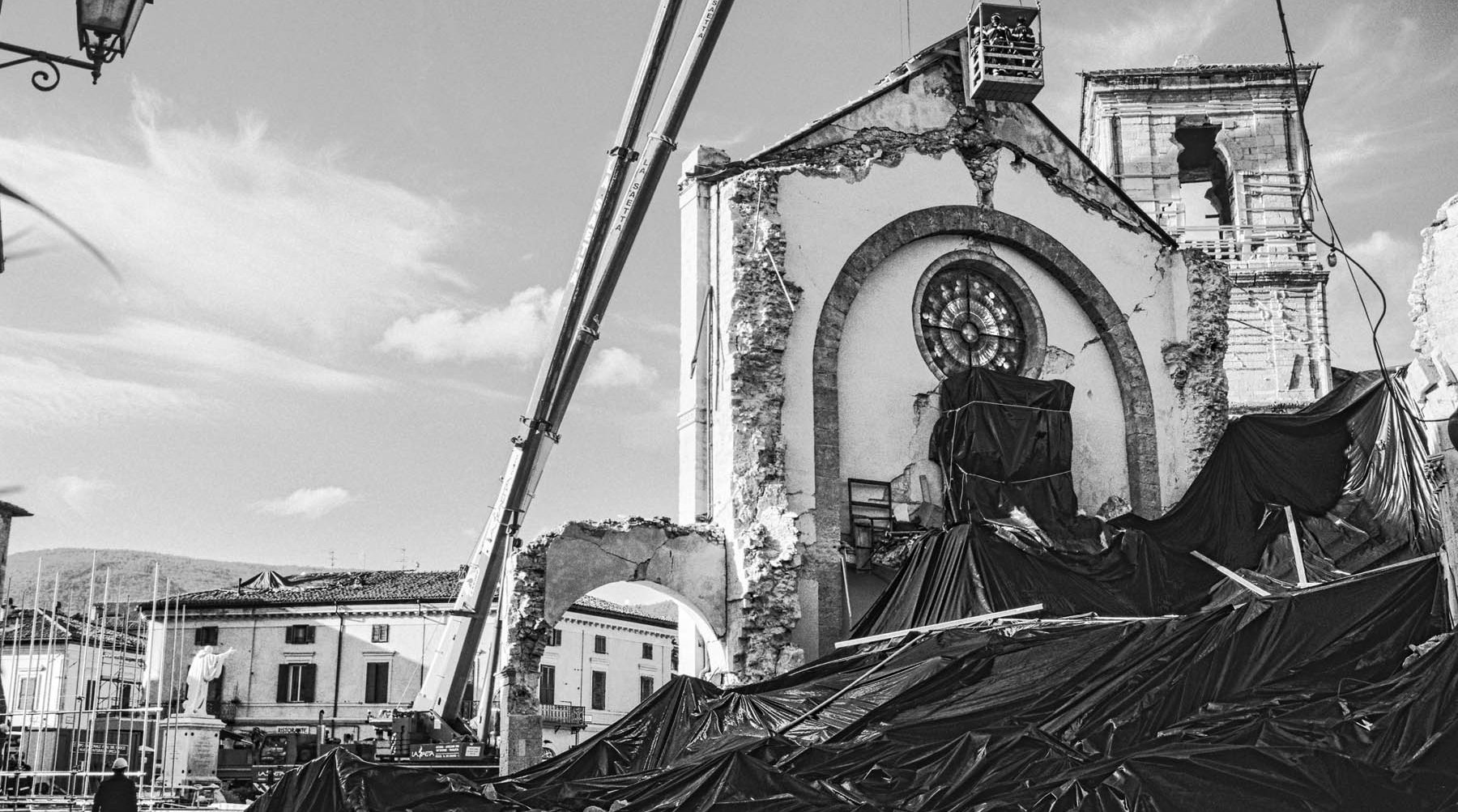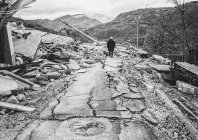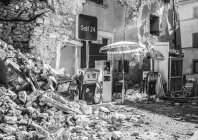
Italy Rent Asunder
Emanuele Scorcelletti
pour Le Figaro Magazine
Between August 24, 2016, and January 18, 2017, Italy was devastated by a series of earthquakes ranging from 5.5 to 6.6 on the magnitude scale. The regions of Marche and Umbria, where so many small villages form a wealth of historical and cultural heritage, were shaken by violent quakes and tremors that left 300 dead and wreaked havoc over 130 regional districts and a total area of 83,000 km² [32,000 square miles]. Names such as Norcia, Arquata del Tronto, Castelraimondo, Pievebovigliana, Tolentino, and Visso had previously impressed and inspired travelers with the unique charm so typical of the provinces north of Rome, but today they are little more than ruins and rubble which, in a matter of moments, transformed key features marking the identity of the country.
Preview



Italy stands out, reaches out in Europe, and currently stands as the front line in crises facing Europe, with pressure from Africa, not only from migration, but also from the depths of the earth, for these mountains in Italy are a focal point for seismic risk in Europe, bearing the burden of the tectonic force of the African continent. Such underground mechanics have sent earthquakes to strike Italy, on average since 1945, once every five years, and millions of Italians have been caught in their forceful clutches. Unlike the earthquake that hit Aquila in 2009, and which became a grand spectacle for Silvio Berlusconi to gain political mileage, this time, the earthquakes in Umbria and the Marche regions did not attract the same level of attention, nor trigger a similar political performance. Today, ten months after the first quakes, promises have been made to rebuild and restore these masterpieces of the medieval and Renaissance periods, but the promises have not been kept. The impression is that life simply stopped on August 24, 2016. Centers of towns and villages have been turned into “red zones” where no one can enter, a labyrinth of houses and buildings falling down, with cracked, crumbling church spires, and roads where no vehicles can pass. A total of 2.3 million tons of rubble needs to be removed, but scarcely 8% has been cleared. In the 51 administrative districts hit, more than 3,000 temporary accommodation facilities should have been delivered for use this winter, but only 296 have been set up. Italy seems to have been left to deal with the drama and distress alone, and the Marche region, the worst-hit, has been left to face up to the disaster almost as if it were an independent nation having to manage its own ordeals, far removed from the political sphere of Rome, far from the turbulent and changing spotlight of the media, perhaps even feeling far from Europe.
But inside the country, appeals were made for donations and received many generous responses, e.g. from the Church, the world of sport and the performing arts, and from thousands of others who volunteered to help villagers and emergency services, all rallying in a movement of solidarity, offering eloquent proof that the country is both resilient and determined to salvage its wounded soul.



